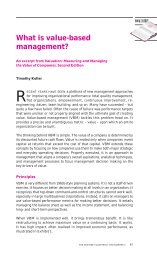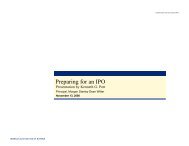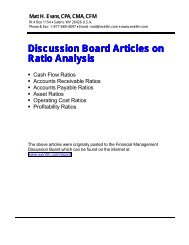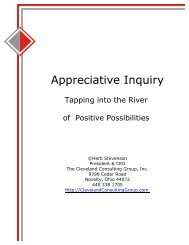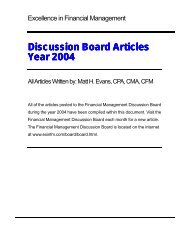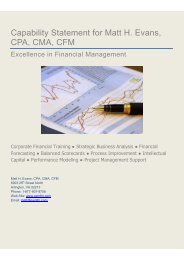Chapter I: Introduction to Data Mining
Chapter I: Introduction to Data Mining
Chapter I: Introduction to Data Mining
You also want an ePaper? Increase the reach of your titles
YUMPU automatically turns print PDFs into web optimized ePapers that Google loves.
© Osmar R. Zaïane, 1999 CMPUT690 Principles of Knowledge Discovery in <strong>Data</strong>bases<br />
basket analysis or association rules in which associations between items occurring<br />
<strong>to</strong>gether or in sequence are studied.<br />
Rentals<br />
transactionID date time cus<strong>to</strong>merID itemList<br />
T12345 99/09/06 19:38 C1234 {I2, I6, I10, I45 …}<br />
. . .<br />
Figure 1.5: Fragment of a transaction database for the rentals at OurVideoS<strong>to</strong>re.<br />
• Multimedia <strong>Data</strong>bases: Multimedia databases include video, images, audio and<br />
text media. They can be s<strong>to</strong>red on extended object-relational or object-oriented<br />
databases, or simply on a file system. Multimedia is characterized by its high<br />
dimensionality, which makes data mining even more challenging. <strong>Data</strong> mining<br />
from multimedia reposi<strong>to</strong>ries may require computer vision, computer graphics,<br />
image interpretation, and natural language processing methodologies.<br />
• Spatial <strong>Data</strong>bases: Spatial databases are databases that, in addition <strong>to</strong> usual data,<br />
s<strong>to</strong>re geographical information like maps, and global or regional positioning. Such<br />
spatial databases present new challenges <strong>to</strong> data mining algorithms.<br />
Figure 1.6: Visualization of spatial OLAP (from GeoMiner system)<br />
• Time-Series <strong>Data</strong>bases: Time-series databases contain time related data such<br />
s<strong>to</strong>ck market data or logged activities. These databases usually have a continuous<br />
flow of new data coming in, which sometimes causes the need for a challenging<br />
real time analysis. <strong>Data</strong> mining in such databases commonly includes the study of<br />
trends and correlations between evolutions of different variables, as well as the<br />
prediction of trends and movements of the variables in time. Figure 1.7 shows<br />
some examples of time-series data.<br />
University of Alberta page 8 Department of Computing Science



